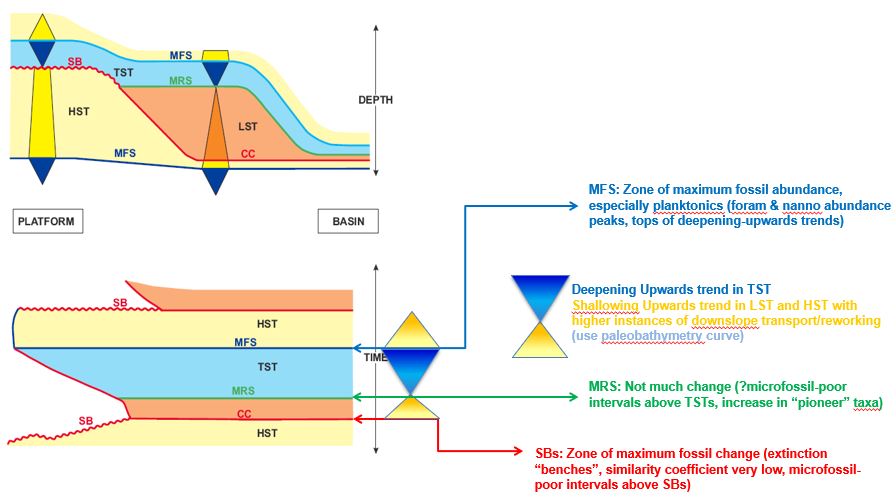Table of Contents
The Highstand Systems Tract (HST)
Once the transgression has achieved its maximum landward extent the rate of sea level rise decreases to another stillstand phase and continued sedimentation changes to progradational once again. These parasequences downlap onto the MFS and condensed section further offshore. As the Highstand continues and sea levels begin to fall once again, floodplains inboard of the coastline decrease and rivers can once again direct more sediment onto the shelf.
If sediment supply is sufficient, coarser sediments may eventually prograde over the edge of the shelf and a Shelf Margin Wedge may develop.

Prograding sediments of the HST.
Like the LST, as sediments prograde to form the HST, sea levels remain high but relatively unchanging (stillstand). The build up of sediment effectively raises the depth of the sea floor compared to the sea surface, and actual water depths will therefore decrease. Throughout the HST fossils will reflect this by demonstrating “shallowing upwards trends” – for example deeper water forms (though not as deep as the slope dwellers) will be progressively replaced by shallower species. Organisms that inhabit oceanic surface waters will also progressively be “pushed back” further and further away from the slowly advancing coastline so the percentages of planktonic components of fossil assemblages will decrease upwards.
At the end of the stillstand phase of the HST, sea levels will begin to fall, eventually forming the next SB.
Summary
By anticipation of behavioural/compositional changes of organisms in response to sea-level changes and sedimentary processes affected by those changes, and by empirical observation, it is possible to identify and characterise sequence surfaces, boundaries and components (systems tracts).

Summary of paleontological characterisitics in sequence components.